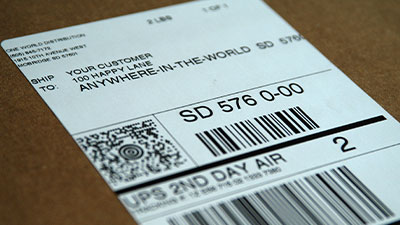If you run an ecommerce business, partnering with a Third-Party Logistics (3PL) fulfillment company is extremely important. They handle various supply chain operations such as warehousing, inventory management, order processing, packaging, product personalization, customer service, and shipping. By using 3PL services, ecommerce businesses can concentrate on what they do best while improving their overall efficiency.
Every 3PL has a different way of pricing services, and there is enormous variability. Before you switch to a new 3PL, bookmark this guide so you know exactly what you need before you sign the contract.
Why SLAs Matter in 3PL Fulfillment
Knowing about Service Level Agreements (SLAs) in 3PL fulfillment is essential for setting clear expectations between businesses and service providers. SLAs are official agreements that outline the standards and performance metrics a 3PL provider must achieve. They act as a basic framework to ensure both parties are on the same page regarding important deliverables.
SLAs help overcome common challenges in 3PL agreements by providing:
- Defined Performance Metrics: Ensure timely delivery and order accuracy.
- Clear Communication Protocols: Outline responsibilities and communication strategies.
- Risk Mitigation: Address potential disputes and liability issues.
Understanding 3PL Service Agreements
A 3PL fulfillment agreement is a contract between an ecommerce business and a third-party logistics provider. This document outlines the specific services to be provided, the expectations for performance, and the terms of engagement. The main purpose of a 3PL service agreement is to create a mutual understanding that aligns the logistics provider’s capabilities with the business’s operational requirements.
Differences Between 3PL Agreements and Standard Logistics Contracts
1. Scope of Services
While standard logistics contracts may focus solely on transportation and storage, a 3PL agreement includes a broader range of services such as order fulfillment, returns processing, and value-added services like customization through Personalized-to-Consumer (P2C) options.
2. Performance Metrics
3PL agreements usually include detailed performance metrics and Service Level Agreements (SLAs) to ensure service quality and efficiency. These metrics are crucial in monitoring delivery times, order accuracy, and other critical aspects.
3. Flexibility and Customization
Unlike standard logistics contracts, which are often firm, 3PL agreements offer flexibility in adapting to changing business needs. This adaptability is vital for businesses seeking tailored solutions that align with their goals.
The Necessity for Businesses to Have Tailored 3PL Contracts
Customized 3PL contracts are essential in addressing the unique operational challenges faced by different businesses. A one-size-fits-all approach can lead to inefficiencies and unmet expectations. By tailoring agreements:
- Businesses Can Optimize Costs: Detailed pricing structures within customized contracts ensure transparency in storage, handling, and shipping billing.
- Risk Management Becomes More Effective: Customized contracts provide clear liability and risk allocation guidelines, safeguarding businesses against potential losses.
- Strategic Partnerships Develop: Tailored agreements foster stronger partnerships by aligning both parties’ objectives, paving the way for long-term collaboration.
Key Components of a Comprehensive 3PL Agreement
A robust 3PL contract is the backbone of a successful partnership between an ecommerce business and its logistics provider. Understanding the various components can help enterprises to ensure that their fulfillment agreement aligns with their operational goals. Here’s a closer look at the essential elements of a comprehensive 3PL agreement:
Scope of Services
The scope of services section outlines the specific responsibilities of the 3PL provider. This part of the contract should be detailed, covering every aspect from storage, picking, packing, to shipping. It ensures clarity on what services are included and any additional services that may incur extra costs. A well-defined scope prevents misunderstandings and sets clear expectations for both parties.
Pricing & Billing Terms
Understanding pricing and billing terms is crucial in managing costs. This section should detail all charges related to storage, handling, and shipping. It includes any variable costs based on volume or seasonal fluctuations. Transparent billing practices help budget and forecast expenses, ensuring no hidden fees disrupt financial planning.
Liability & Risk Allocation
Liability and risk allocation address how damage claims and losses are managed. This component defines each party’s responsibilities in case of inventory damage or loss during transit. Clear guidelines on who covers what type of risk protect both the business and the 3PL provider from unexpected liabilities.
Service Level Agreements (SLAs)
Service Level Agreements (SLAs) are critical in defining performance standards. They specify timelines for order processing, delivery windows, and other performance guarantees. SLAs create accountability by setting measurable targets aligning with business expectations, ensuring service levels are maintained throughout the partnership.
Termination Clauses
Every termination clause provides guidelines on how and when either party can exit the 3PL contract. This section should outline the conditions under which termination is permissible, the notice periods required, and any penalties involved. Having well-defined termination clauses safeguards businesses from abrupt service disruptions while providing flexibility to pivot if needed.
Incorporating these components into your 3PL contract template ensures that your logistics partnership is transparent and both parties are on the same page. Each element helps mitigate risks and enhance operational efficiency.
The Role of Service Level Agreements (SLAs) in Third-Party Logistics
 An SLA is a contract between a 3PL provider and an ecommerce business that outlines the specific services expected, performance standards, and related measurements. In logistics, SLAs are essential because they set clear expectations and define responsibility.
An SLA is a contract between a 3PL provider and an ecommerce business that outlines the specific services expected, performance standards, and related measurements. In logistics, SLAs are essential because they set clear expectations and define responsibility.
Key Aspects of SLAs in 3PL Fulfillment:
1. Definition in Logistics Context
SLAs serve as a formal agreement that defines the responsibilities and performance expectations between an ecommerce business and its 3PL partner. They cover areas such as delivery timelines, order accuracy, and response times to inquiries or issues.
The importance of SLAs in logistics cannot be overstated. By establishing clear benchmarks for service quality, SLAs act as the foundation for managing relationships between businesses and their 3PL providers. They reduce risks by ensuring both parties are aligned on operational goals, minimizing misunderstandings, and building trust.
SLAs include specific performance measurements like on-time delivery rates and inventory accuracy percentages. These measurements allow businesses to continuously track the effectiveness of their 3PL services, making sure that partners consistently meet agreed standards.
4. Conflict Resolution
With predefined protocols within an SLA, disputes can be handled efficiently. This proactive approach prevents potential disruptions in service continuity by providing clear steps for resolution when problems occur.
Essential Elements of an Effective SLA with Your 3PL Partner
An effective SLA with your 3PL provider is not just a document—it’s the backbone of a successful logistics partnership. It defines expectations, ensures accountability, and lays the groundwork for a seamless operational flow.
Scope of Services
One of the core components of an SLA is the Scope of Services. This section meticulously outlines the specific logistics services that your 3PL provider will deliver. Whether it’s basic order fulfillment, personalized-to-consumer (P2C) services such as embroidery or engraving, or international shipping, clarity is crucial. The scope should address all aspects of logistics operations relevant to your business model:
- Order Fulfillment: D2C, B2B, and P2C services.
- Personalization Options: Include embroidery, engraving, and custom greeting cards.
- Shipping Solutions: Outline domestic and international shipping services, including carrier options, delivery timelines, and tracking capabilities.
- Warehousing and Inventory Management: Define the storage capacity, picking and packing processes, inventory tracking systems, and order accuracy benchmarks.
- Returns and Reverse Logistics: Specify the procedures for handling returns, restocking inventory, and managing customer refunds or replacements.
Performance Metrics
Performance metrics are vital benchmarks that measure service quality. In an SLA, these metrics are often referred to as Key Performance Indicators (KPIs). Common KPIs include:
- Delivery Times: Speed and reliability of shipping and delivery processes.
- Order Accuracy: Precision in picking and packing orders to minimize errors.
- Cost Per Unit Shipped: The cost of shipping each unit and how it impacts your bottom line.
- Dock-to-Stock Time: The efficiency of the receiving and inventory stocking process.
- Customer Satisfaction: Feedback and ratings from customers on their overall experience.
These KPIs not only highlight areas of excellence but also identify potential improvements. By evaluating these metrics consistently, you can ensure that your 3PL partner is meeting the mark.
Responsibilities and Communication Protocols
Effective SLAs include well-defined responsibilities and communication protocols. Establishing clear expectations for both parties ensures smooth collaboration and efficient issue resolution:
- Responsibilities: Both parties must understand their roles in maintaining service quality.
- Communication Protocols: Set up regular meetings or updates through preferred channels like phone, email, or chat to discuss performance and address any arising issues promptly.
A robust communication strategy strengthens partnerships by fostering transparency and trust between you and your 3PL provider. Maintaining this connection helps mitigate risks associated with miscommunication or unmet expectations.
Crafting an SLA that encompasses these essential elements empowers you to manage logistics operations more effectively while nurturing a productive relationship with your 3PL partner.
Evaluating Performance Metrics for Your SLA: A Guide for Ecommerce Businesses
Ensuring the success of your partnership with a 3PL provider hinges on the practical evaluation of performance metrics. These metrics are crucial in tracking partner performance, clearly showing how well your SLAs are being met. You can make informed decisions to enhance operational efficiency and customer satisfaction by focusing on key indicators.
Critical Metrics for Effective Evaluation:
- Fulfillment Lead Time: Measures the duration from order placement to dispatch. Shorter lead times are indicative of efficient processing and can significantly impact your customer satisfaction rates.
- Order Accuracy Rate: Reflects the percentage of orders delivered correctly without errors. High accuracy rates minimize returns and increase trust in your brand.
- Inventory Turnover: Represents the frequency at which inventory is sold and replaced over a period. Efficient inventory management reduces holding costs and prevents stockouts.
- Customer Service Responsiveness: Evaluates how quickly and effectively customer inquiries and issues are addressed by your 3PL provider. Prompt responses are essential for maintaining a positive brand image.
- Return Processing Time: The speed at which returned items are processed and restocked or refunded. Efficient return handling enhances customer loyalty and repeat business potential.
Implementing these metrics into your SLA facilitates performance assessment and aligns both parties toward common goals. Regularly reviewing these indicators ensures that your logistics partner continues to meet your evolving demands.
Managing Disputes Effectively Through Well-Defined Procedures in Your SLA with a 3PL Provider
Navigating disputes in third-party logistics can be challenging but manageable with proper dispute resolution procedures in SLAs. Ensuring a clear framework for resolving conflicts is vital to maintaining a seamless partnership. Such frameworks prevent misunderstandings that could potentially disrupt operations and affect service delivery.
Methods for Resolving Conflicts:
- Negotiation: The first step typically involves direct negotiation between the parties involved. Encouraging open communication helps address issues promptly and amicably.
- Mediation: If negotiation fails, mediation by a neutral third party can be beneficial. This approach facilitates dialogue, helping both sides reach a mutually acceptable solution.
- Arbitration: When mediation does not resolve the issue, arbitration offers a more formal process. Here, an arbitrator assesses the case and provides a binding resolution.
- Litigation: As a last resort, taking legal action through litigation may be necessary when other methods fail to deliver satisfactory outcomes.
Importance of Clear Procedures:
- Establishing explicit procedures within your SLA ensures both parties are aware of the steps to take during disputes, reducing ambiguity and potential escalation.
- Clearly defined roles and responsibilities aid in swift conflict resolution, minimizing downtime and maintaining service levels.
- Effective dispute management protocols foster trust and collaboration between you and your 3PL provider, enhancing overall operational efficiency.
Understanding Service Level Agreements in 3PL Fulfillment revolves around creating robust systems to handle disagreements efficiently. A well-crafted SLA not only outlines services but also equips you with the tools to manage conflicts effectively, ensuring sustained business success.
Incentivizing Excellence: Balancing Penalties and Rewards in Your SLA with a 3PL
Balancing penalties for non-compliance and incentives for performance is crucial in structuring a robust SLA with your 3PL partner. This balance ensures both accountability and motivation, aligning the 3PL’s objectives with your business goals.
Penalties for Non-Compliance
Non-compliance with agreed service levels can result in significant operational disruptions affecting both you and your customers. Implementing penalties serves as a deterrent against underperformance. These may include:
- Financial Penalties: Charging fees for each instance of service failure, such as late deliveries or inaccurate order fulfillment.
- Service Credits: Offering future services at no cost to compensate for poor performance.
- Contractual Consequences: Potential termination of the agreement if repeated breaches occur.
Penalties need to be clearly defined within the SLA to avoid disputes and ensure mutual understanding.
Incentives for Performance
While penalties address underperformance, incentives encourage 3PL providers to exceed expectations. Effective incentives might include:
- Performance Bonuses: Offering financial rewards when key performance indicators (KPIs) surpass targets.
- Extended Contracts: Providing contract renewals for consistently high service levels.
- Volume Increases: Allocating additional business volumes as a reward for exceptional performance.
Incentives foster a cooperative relationship and drive continuous improvement. Balancing these elements within an SLA creates a framework that promotes excellence while mitigating risks. This alignment is essential for maintaining a productive partnership with your 3PL provider.
Ensuring Relevance Over Time: The Importance of Regularly Reviewing Your SLA with a 3PL Partner
An effective SLA is not static, and having a consistent SLA review process ensures that your agreements remain aligned with current business objectives and operational realities.
Importance of Regularly Reviewing SLAs Based on Performance Dat
Regular examination of SLAs through the lens of performance data is essential. This analysis:
- Identifies Trends: By scrutinizing metrics such as delivery times and order accuracy, you can detect patterns that indicate either efficiency or areas needing improvement.
- Ensures Compliance: Continuous monitoring guarantees that the 3PL provider adheres to agreed-upon standards, securing service quality.
- Adapts to Market Changes: The ecommerce landscape shifts rapidly; thus, frequent reviews allow adaptation to new market demands, customer preferences, or tariffs.
Strategies for Adjusting Agreements to Maintain Relevance
To keep your SLA pertinent, consider these strategies:
- Scheduled Reviews: Set predefined intervals—quarterly or bi-annually—for comprehensive SLA assessments.
- Performance Benchmarking: Utilize industry benchmarks to gauge your 3PL’s performance against competitors, ensuring competitive advantage.
- Open Communication Channels: Foster an environment where feedback is encouraged from both parties. This collaboration aids in identifying potential adjustments early.
- Flexibility in Terms: Build adaptability into your contract terms to swiftly incorporate changes without extensive renegotiations.
Protecting Sensitive Information Through Confidentiality Clauses in Your 3PL Contract with a Third-Party Logistics Provider
Confidentiality clauses in 3PL contracts act as a shield against unauthorized access to sensitive information. These clauses make sure that proprietary data, such as customer lists, pricing structures, and trade secrets, stay safe from being misused or exposed.
The Role of Confidentiality in Service-Level Agreements
Confidentiality clauses are carefully crafted within SLAs to protect both parties’ interests. They specify the types of information that are considered confidential and set up rules for handling such data. This legal protection ensures that your business’s competitive advantage remains intact.
Why Safeguarding Sensitive Information Matters
The importance of protecting sensitive information cannot be emphasized enough:
- Data Security: Stops data breaches that could result in financial loss or damage to reputation.
- Trust Building: Strengthens trust between e-commerce businesses and their 3PL partners by ensuring mutual respect for privacy.
- Competitive Advantage: Hides unique business strategies and operational insights from competitors.
Key Components of a Well-Drafted Confidentiality Clause
A well-written confidentiality clause will usually include:
- Definition of Confidential Information: Clearly defines what confidential data is.
- Obligations of the Parties: States how each party should handle, store, and share information.
- Duration of Confidentiality Obligations: Specifies how long the obligations remain in effect after the contract ends.
Making sure these elements are clearly defined in your SLA strengthens your business’s position in a highly competitive market. It also allows for a smooth transition to more strategic aspects of your partnership with 3PL providers.
Interested in Making a Switch?
Structured SLAs ensure clarity, set expectations, and protect both parties, helping establish a mutually beneficial partnership. If you are looking to partner with a 3PL or your current one isn’t cutting it, book a complimentary logistics consultation with our team. We will help you identify opportunities to start lowering expenses, improve fulfillment capabilities, and offer new services such as P2C fulfillment, turning logistics from another expense to a new profit center.
FAQs (Frequently Asked Questions)
A 3PL fulfillment agreement is a contract between an ecommerce business and a third-party logistics provider that outlines both parties' responsibilities, services, and expectations. Establishing clear operational guidelines, managing costs, and ensuring efficient logistics processes is crucial.
A comprehensive 3PL agreement typically includes the scope of services provided, pricing and billing terms, liability and risk allocation, SLAs outlining performance guarantees, and termination clauses detailing exit strategies.
SLAs enhance relationships by setting clear expectations regarding service delivery, performance metrics, and communication protocols. They help manage accountability and ensure that both parties understand their responsibilities.
Essential performance metrics to include in an SLA are delivery times, order accuracy rates, customer service responsiveness, and fulfillment lead times. These KPIs help track the effectiveness of the 3PL provider.
Regularly reviewing SLAs is vital to ensure they remain relevant based on performance data and changing business needs. This process allows for necessary adjustments to maintain effective partnerships and improve service levels.
Confidentiality clauses within a 3PL contract protect sensitive information shared between the ecommerce business and the logistics provider. They are essential for maintaining trust and safeguarding proprietary data throughout the partnership.





